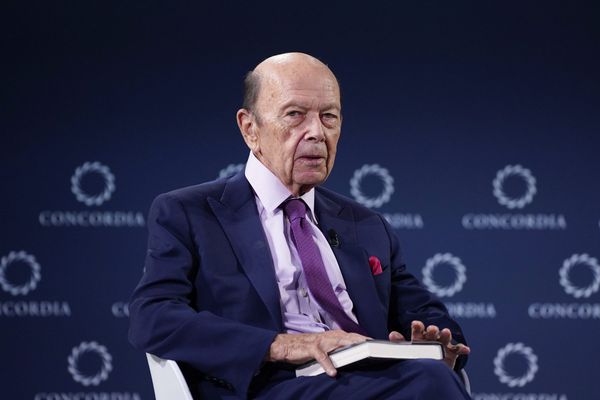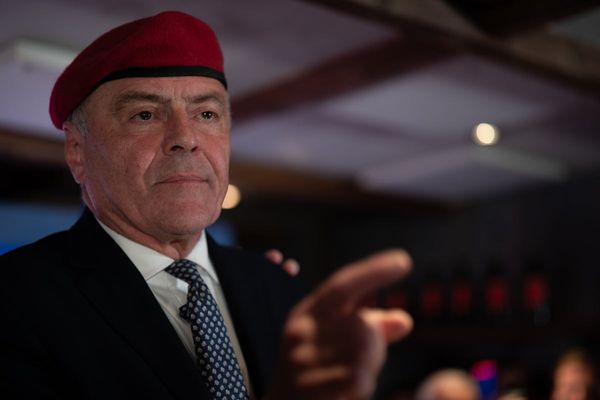
Astonishments and violences fill the Royal Academy’s survey show of Johannesburg-born artist William Kentridge. Glimpses of hangings and torture, sex in the pool, old footage of a white hunter skipping towards the rhino he has just downed in order to give it a final shot in the head. An ampersand turns into a gallows and bits of a body are flushed away in the shower. Snatches of crackly operatic aria, lilting African song and paranoid voices on the telephone fill the air, along with the regular chink of a miner’s hammer against a rock. Kentridge’s show is filled with sounds and furies.
Now in his late 60s, Kentridge spent more than half his life living under apartheid. The system itself, and the complications of its aftermath, have been his key subjects. The artist’s parents were both lawyers, playing prominent roles defending human rights and those accused of treason.
The artist paces about, first one way, then the other. Back and forth, between one thought and the next. Kentridge takes his walk between the drawing and the camera, in order to record what he has just drawn and to give himself pause before returning to the charcoal image, in order to swipe or rub something away, to shift some part of the action and to add some new element, to move the action along. The successive changes to the drawn image eventually become the sequences of his primitive animated films, which develop intuitively and with a sense of inevitability. If there is no resolution, it is because there isn’t one; his animations are less stories than situations.
The RA show is also necessarily fragmentary and incomplete, filled with stops and starts. Tracing the development of his art from the 1980s to the present, in which drawing plays the primary role, it also includes animations, filmed performance and sculpture, and sometimes works that involve all these elements together. Kentridge has gone on to work for the stage, designing and directing large-scale operas and other theatrical productions around the world. Some motifs recur throughout – the megaphone, the stove-top coffee pot, the old-fashioned typewriter, the camera, trees and leaves and the pages of books, as well as a cast of characters, including the artist himself, lumbering through, balding, ageing, playing himself as a character as much as he is the work’s originator.
Kentridge’s early animations were scathing and full of sarcasm and bite, as he delved into the inequalities and brutalities of the apartheid system and the white culture that supported it. This was their central theme, as well as being made from drawings that are themselves dirty with charcoal dust – murky tales told in grubby materials. Their baseness could also conjure the filth of corruption, the stink of his creation Soho Eckstein’s cigar, his tongue going between his wife’s legs, his greed and ugliness; vistas of a poor land studded with graves, the filth of the mine and the wreckage of a museum collapsing on itself. A number of these projected films, made between 1989 and 2020, fill one large semi-darkened gallery. There is no respite and too much to take in and follow as we move from film to film, from one set of benches to the next, with their stagey overhanging conical speakers, with the sound leakage and the insistent charcoal-drawn images.

Eckstein, property developer and mining magnate, a recurrent figure in his chalk-striped suit, is a gross caricature, at large in a world where the African National Congress has at last been given legitimacy and his world is on the brink. His rival in love, Felix Teitlebaum, is yet another stand-in for Kentridge himself. In another film, we find one protagonist (it is uncertain which of these two we are looking at) hiding behind a newspaper in a deckchair on the beach, overlooked by uniformed figures on a balcony. There is a baptism in the waves, with black congregants. The tide goes in and out, time retraces and advances, optimism is swept away. Kentridge’s drawn and animated narratives are incomplete and unresolved situations, filled with the ambiguities of what South African novelist JM Coetzee called, writing about the artist’s early films, “the troubled, amnesiac white South African psyche”. This is the artist’s subject, his own as much as his protagonists’.

In another gallery, Kentridge has drawn directly on the walls: a camera on its tripod, a rhinoceros, blaring loudspeakers and a radio, while in the centre of the space the artist’s animated version of the writer Alfred Jarry’s invention Père Ubu pokes, and eventually plucks out, the eye of his victim. Animation gives way to film of a real eye, glistening and terrified. Jarry’s King Ubu has become an agent of the security forces whose wife, a wall panel tells us, thinks he might be having an affair, but is relieved to learn he has only been torturing and murdering suspected political activists. We never meet Ubu’s wife, unless she’s that gelatinous eye, seeking to uncover the truth. The whole story, which, we learn, was developed as a play, Ubu and the Truth Commission, written by Kentridge’s long-term collaborator Jane Taylor and directed by the artist and performed in 1997 in the Laboratory of the Market Theatre in Johannesburg. Ubu Tells the Truth is a vignette, and the wall-drawings and accompanying etchings and drawings in another room don’t really flesh it out.
Much more successful, and visually compelling, is the 2005 Black Box/Chamber Noir, a mechanical theatre with automated puppets, moving backdrops and projected film. Sitting and watching the events on their little stage, it is often difficult to distinguish between the live, albeit mechanical action, and filmed projection. One can believe in it all the same, as the work delves into the violent suppression and genocide of the Herero and Nama people of Namibia in 1908 by German colonial armed forces. The most unnerving aspect of Black Box is its seductiveness, the quality of almost childlike wonder evinced by this miniature toy world, and its horrendous subject matter and knockabout burlesque stage action. And here comes the Big White Hunter, and down goes the rhino.
Then there are the tapestries, derived from old maps, detailing the parcelling up of a continent by Europe’s 19th-century superpowers, and a three-screen film based on the operas created by Mao Zedong’s wife Jiang Qing during the Chinese Cultural Revolution. Kentridge has moved the action to South Africa, where a black ballerina dances with flag and rifle, in a work that alludes to Chinese economic colonialism in present-day Africa. Elsewhere in the exhibition, we meet Kentridge in his studio. He stands beside himself, a self divided by a simple cinematic trick; both identically dressed, both balding, both with the pince-nez on its black ribbon. Kentridge the artist sits at his desk, surrounded by drawing materials and the tools of his trade. Besides him stands his overbearing superego, berating and sneering like a schoolmaster at his indolent, lethargic double. Moments of humour here are welcome. And here he is again, an animated Kentridge, hand-drawn, pacing between the chapters of The Posthumous Memoirs of Brás Cubas, by the 19th-century Brazilian novelist Machado de Assis, which flicker beneath him. Kentridge on the move, then, going nowhere.

The best comes last, a film called Sibyl based on a chamber opera (Waiting for the Sibyl) commissioned by the Teatro dell’Opera in Rome in 2019. It is projected behind an almost bare stage, and we are at the entrance to the Underworld, where the anxious would leave questions, written on leaves, asking about their fate for the Sibyl to answer. She also wrote her replies on leaves, but no one could tell to whom her answers were addressed. Kentridge’s Sibyl mixes animation and filmed shadow-play, using drawing and actors projected life-size. Sculptures become turning silhouettes and silhouettes become drawings. Figures become trees and trees become birds. The transitions are ravishing. A lone dancer, frenetic and passionate, becomes a Goya drawing, a bird, an electric fan. Trees dance on an enormously enlarged page alongside the Sibyl’s often enigmatic answers. “You will live longer than a horse but not nearly so long as a crow.” “Start dying, assiduously, wisely, optimistically. Waste no time.” Screens drop and rotate and fold into one another, and people move among scraps of windblown paper, as though in a gale. “Starve the algorithm,” the papers say, and “the execution site is never empty”. Beautiful voices rise and fall in music composed by Nhlanhla Mahlangu and Kyle Shepherd. Relentless, vertiginous and astonishing, I found myself unexpectedly moved among this play of illusions and shadows. Sibyl is Kentridge at his best.
William Kentridge is at the Royal Academy, London, from 24 September to 11 December.







